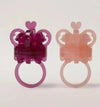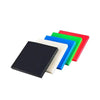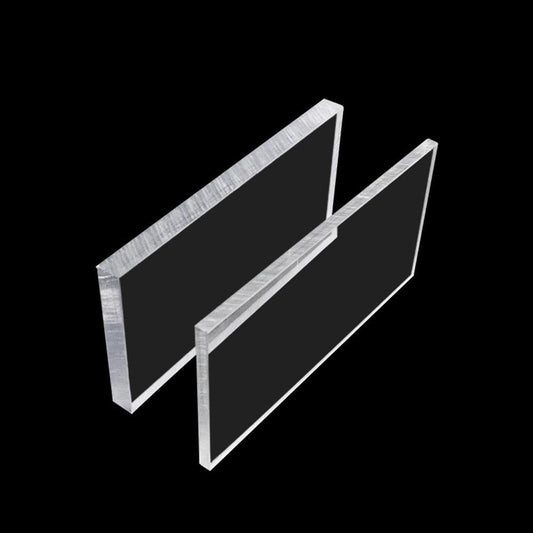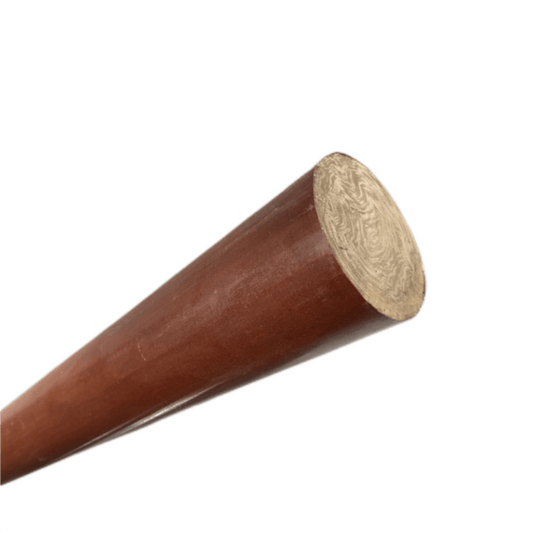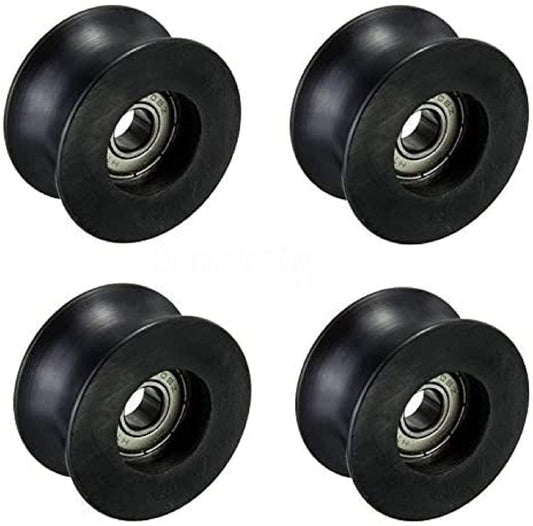Are you overwhelmed by the variety of ABS plastic sheets available? This comprehensive guide will help you navigate the choices, ensuring you select the perfect ABS sheet for your specific needs. Discover the essential properties of ABS plastic, including its strength, durability, and thermal resistance, and learn how these factors influence your project.
🎉🎉🎉Limited Time Offer Use code: QR4GNY08SHVR at checkout and enjoy a special discount on your entire order! 👉 ABS plastic

We break down how to determine the right thickness based on different applications, from automotive and construction to signage and consumer products. Understand the significance of sheet sizes and formats, like the popular 4x8 ABS sheets, and find out which sizes suit your projects best.
Dive into detailed recommendations for application-specific thicknesses, ensuring your ABS plastic sheeting meets the demands of any environment. Learn the best practices for cutting and machining ABS sheets, with tips on tools and techniques for a smooth finish.
Explore environmental considerations, such as UV resistance and weather durability, and balance your budget with performance by evaluating cost implications. This guide is your go-to resource for making informed decisions, maximizing the potential of ABS plastic in your projects.
Whether you're a professional or a DIY enthusiast, this guide offers the insights you need to choose the right ABS plastic sheet confidently.
Understanding ABS Plastic Sheet Properties
Strength and Durability
ABS plastic sheets are renowned for their exceptional strength and durability. This material combines the robustness of acrylonitrile and the rigidity of styrene, making it highly resistant to physical impacts and wear. These properties make ABS sheets ideal for applications that demand high tensile strength and impact resistance, such as automotive parts and protective casings. The inclusion of butadiene enhances its toughness, allowing ABS plastic to withstand heavy usage and rough handling without cracking or breaking.
Thermal Resistance
Another significant advantage of ABS plastic is its thermal resistance. ABS can withstand varying temperatures without losing its structural integrity, which is crucial for applications exposed to fluctuating temperatures. This property ensures that ABS sheets maintain their shape and functionality even in harsh environments, making them suitable for both indoor and outdoor applications. For instance, ABS plastic sheeting is often used in outdoor signage and automotive parts that are regularly exposed to sunlight and heat.
Machinability and Workability
ABS plastic is highly regarded for its excellent machinability and workability. It can be easily cut, drilled, and shaped using standard tools, making it a preferred material for prototyping and custom fabrication. The ease of processing allows manufacturers to create complex shapes and designs with ABS plastic sheets. This versatility is particularly beneficial in industries like consumer electronics and appliance manufacturing, where precise and intricate components are essential.
Chemical Resistance
ABS plastic sheets also offer good chemical resistance, which adds to their durability in various environments. They are resistant to many acids and alkalis, ensuring longevity and reliability in applications where exposure to chemicals is a concern. This property makes ABS sheets a suitable choice for laboratory equipment and industrial applications where chemical exposure is frequent.
Lightweight yet Sturdy
Despite their strength, ABS sheets are relatively lightweight, which makes them easier to handle and install compared to heavier materials like metal or glass. This combination of lightness and sturdiness reduces transportation costs and simplifies the installation process in large-scale projects, such as constructing modular furniture or creating large display stands.
Aesthetic Versatility
ABS plastic sheets are available in a variety of colors and finishes, providing aesthetic versatility for designers and manufacturers. Whether a high-gloss finish for consumer electronics or a textured surface for automotive interiors, ABS plastic can be customized to meet specific aesthetic requirements. This adaptability ensures that ABS sheets can enhance the visual appeal of any product they are used in.
By understanding these properties, you can better appreciate why ABS plastic sheets are a popular choice across multiple industries. Their combination of strength, thermal resistance, machinability, and aesthetic versatility makes them an indispensable material in modern manufacturing and design.

Determining the Right Thickness for Your Application
Choosing the appropriate thickness for ABS plastic sheets is crucial for ensuring optimal performance in your specific application. Different applications require different thicknesses to balance strength, flexibility, and cost-effectiveness. Here’s a detailed guide on how to select the right thickness based on various use cases.
Furniture Making
For furniture making, the ideal thickness of ABS plastic sheets typically ranges from 3-5mm. This thickness provides a good balance between structural integrity and workability. Thicker sheets, such as those around 5mm, offer enhanced sturdiness and can support more weight, making them suitable for components like shelves, sides of cabinets, and drawer fronts. Thinner sheets, closer to 3mm, can be used for decorative elements or less load-bearing parts, where flexibility is more important.
Model Making and Prototyping
When it comes to model making and prototyping, 2-3mm ABS sheets are usually preferred. This thickness allows for fine detailing and easier manipulation, essential for creating scale models and prototypes. The thinner sheets are lightweight and can be easily cut and shaped to achieve intricate designs. They also provide enough strength to maintain the model’s integrity without being too rigid, which could make detailed work more challenging.
Signage and Displays
For signage and displays, both indoor and outdoor, the thickness of ABS plastic sheets should be chosen based on the environment and exposure. For indoor displays, 2-3mm sheets are generally sufficient. They are easy to mount and handle, and their lightweight nature makes them ideal for creating attractive signs and displays. For outdoor applications, where the signs need to withstand elements like wind, rain, and sunlight, 5-10mm sheets are recommended. Thicker sheets offer the necessary rigidity and durability to ensure the signs remain intact and legible over time.
Automotive Components
In the automotive industry, the required thickness of ABS plastic sheets varies depending on the specific part being manufactured. For interior trim and dashboards, 3-5mm sheets provide the right combination of strength and flexibility. These components need to be robust enough to withstand daily wear and tear while also being flexible enough to fit the vehicle’s contours. For exterior parts, such as bumpers and protective panels, 5-10mm sheets are ideal. These thicker sheets offer superior impact resistance and can absorb shocks, providing better protection for the vehicle.
Protective Packaging
For protective packaging, the thickness of ABS sheets depends on the level of protection required. 1-2mm sheets can be used for lightweight items and less demanding packaging needs. These thinner sheets are easy to mold and provide adequate protection for less fragile items. For heavy-duty protective packaging, 3-5mm sheets are more appropriate. They offer greater strength and can protect against impacts and abrasions during transportation and handling.
Educational and Laboratory Settings
In educational and laboratory settings, ABS plastic sheets are often used for creating educational models, experimental setups, and protective covers. The thickness required can vary, but generally, 2-4mm sheets are sufficient. These sheets provide the necessary durability and resilience to withstand frequent handling and use in experiments while also being easy to cut and shape for different educational purposes.
By considering these factors, you can choose the appropriate thickness of ABS plastic sheets to ensure your project’s success. Remember, the key is to balance strength, flexibility, and cost according to the specific demands of your application.

Comparing ABS Sheet Sizes and Formats
Standard Sizes of ABS Plastic Sheets
One of the most common sizes for ABS plastic sheets is the 4x8 feet format. This size is widely used in various industries due to its versatility and ease of handling. 4x8 ABS sheets are large enough to cover substantial areas but can still be easily cut down to smaller sizes if needed. This standard size is particularly beneficial for applications in construction, signage, and automotive industries, where large panels are often required.
Application Suitability of Standard Sizes
Construction and Fabrication
In the construction and fabrication sectors, 4x8 ABS plastic sheets are preferred because they offer a substantial coverage area, reducing the need for multiple smaller panels and minimizing seams. This size is ideal for creating large surface areas such as walls, partitions, and panels. The robustness and ease of machining of ABS plastic make it a popular choice for fabricating various construction components.
Signage and Displays
For the signage and display industry, 4x8 ABS sheets provide ample space for creating both large outdoor signs and intricate indoor displays. The size allows for full-size signs to be cut from a single sheet, ensuring a seamless and professional appearance. The durability and weather resistance of ABS plastic make these sheets suitable for outdoor use, where they must withstand environmental factors such as UV rays and moisture.
Variations in Thickness and Custom Sizes
While the standard 4x8 feet size is highly versatile, ABS plastic sheets are available in various thicknesses to suit different needs. Thicker sheets offer increased strength and are ideal for heavy-duty applications, while thinner sheets provide more flexibility and are easier to mold and shape. Custom sizes can also be ordered to meet specific project requirements, providing additional flexibility for unique applications.
Automotive Applications
In the automotive industry, the size and thickness of ABS plastic sheets are crucial for creating components like dashboards, interior panels, and protective covers. 4x8 sheets can be used to manufacture large parts, reducing the need for assembly and ensuring a uniform finish. The material's impact resistance and thermal stability are particularly advantageous for automotive applications, where safety and performance are paramount.
Specialty Formats and Uses
Beyond the standard 4x8 format, ABS plastic sheets are available in a variety of other sizes and formats to cater to specific needs. For example, smaller sheets or strips can be used for detailed work or smaller projects. Rolls of ABS plastic are also available, offering continuous lengths for applications requiring long, unbroken material sections.
Consumer Products and DIY Projects
For consumer products and DIY enthusiasts, having access to different sizes and formats of ABS plastic sheets allows for greater creativity and precision. Smaller sheets or custom-cut pieces can be used for projects like model making, crafting, and home improvements. The ease of cutting and shaping ABS plastic makes it a favorite among hobbyists.
Summary of Size and Format Benefits
- 4x8 ABS sheets are versatile and widely used in construction, signage, and automotive industries.
- The large size reduces the need for multiple panels, minimizing seams and ensuring a professional finish.
- Various thicknesses allow for tailored solutions to specific strength and flexibility requirements.
- Custom sizes and specialty formats provide additional flexibility for unique applications and detailed work.
- Rolls of ABS plastic offer continuous lengths for specific industrial uses.
Understanding the different sizes and formats of ABS plastic sheets helps in selecting the right material for your project, ensuring optimal performance and cost-efficiency.

Application-Based Recommendations for ABS Sheet Thickness
Choosing the right ABS sheet thickness is essential to ensure the material performs optimally for its intended application. Different industries and uses have specific requirements for strength, flexibility, and durability. Below are detailed recommendations for various applications, helping you make the best choice based on your needs.
Automotive Industry
Interior Components
For interior components such as dashboards, door panels, and trim, ABS plastic sheets with a thickness of 2-4mm are generally recommended. This thickness provides enough flexibility to mold the sheets into complex shapes while maintaining the necessary strength to withstand everyday wear and tear. The thermal resistance of ABS plastic also ensures that the components do not deform under high temperatures, which is crucial for vehicle interiors.
Exterior Parts
Exterior parts like bumpers and protective panels require a more robust material. Here, 5-10mm ABS sheets are ideal. The increased thickness offers superior impact resistance and durability, essential for protecting the vehicle from collisions and harsh environmental conditions. Additionally, thicker ABS sheets can absorb shocks better, providing an extra layer of safety.
Construction and Fabrication
Wall Panels and Partitions
In construction and fabrication, ABS plastic sheets are often used for creating wall panels and partitions. For these applications, a thickness of 4-6mm is typically sufficient. This thickness provides the necessary rigidity and structural support while being lightweight enough for easy installation. The weather resistance of ABS plastic makes it suitable for both indoor and outdoor use, ensuring longevity and minimal maintenance.
Decorative Elements
For decorative elements such as cladding and trims, thinner 2-3mm ABS sheets are preferred. These sheets are easier to cut and shape into intricate designs, offering greater design flexibility. They are also lighter, reducing the load on the underlying structures and making the installation process simpler.
Signage and Displays
Outdoor Signage
Outdoor signage demands materials that can withstand environmental stressors such as UV exposure, rain, and wind. For these purposes, 5-10mm ABS plastic sheets are recommended. The thickness ensures the signs are rigid and durable, preventing warping or cracking over time. The UV resistance of ABS plastic also ensures that the signs remain vibrant and legible, even after prolonged exposure to sunlight.
Indoor Displays
For indoor displays, such as those found in retail stores or trade shows, 2-4mm ABS sheets are usually adequate. This thickness strikes a balance between sturdiness and ease of handling, making it easy to create attractive and professional displays. The lightweight nature of these sheets also makes them ideal for temporary setups that need to be frequently moved or reconfigured.
Consumer Products
Appliance Housings
Appliance housings, such as those for refrigerators, washing machines, and other household devices, benefit from 3-5mm ABS plastic sheets. This thickness offers sufficient strength and impact resistance to protect the internal components while being easy to manufacture and assemble. The chemical resistance of ABS plastic also helps in preventing degradation due to household chemicals.
Electronics Enclosures
For electronics enclosures, 2-3mm ABS sheets are typically used. These thinner sheets allow for precise molding and detailed designs, which are crucial for fitting around electronic components. The thermal stability and insulative properties of ABS plastic ensure that the electronics are protected from heat and electrical interference.
Packaging
Protective Packaging
In protective packaging, the thickness of ABS plastic sheets depends on the level of protection required. For lightweight items, 1-2mm sheets can suffice. These thinner sheets are flexible and easy to mold into various shapes, providing adequate protection without adding significant weight. For heavy-duty packaging, 3-5mm sheets are more suitable, offering enhanced impact resistance and durability to safeguard valuable or fragile items during transportation.
By considering the specific requirements of each application, you can select the most appropriate ABS sheet thickness to ensure the best performance and durability. Whether for automotive, construction, signage, consumer products, or packaging, understanding these recommendations will help in making informed decisions.

How to Cut and Machine ABS Plastic Sheets
Cutting and machining ABS plastic sheets requires specific tools and techniques to achieve clean, precise results. Whether you’re working on a DIY project or an industrial application, understanding the right methods can help you work more efficiently and effectively with ABS plastic. Here are some detailed guidelines on cutting and machining ABS sheets.
Tools for Cutting ABS Plastic Sheets
Utility Knife
For thinner ABS sheets (up to 3mm), a utility knife can be a simple and effective tool. Using a straight edge as a guide, score the sheet multiple times until you can snap it along the scored line. This method is particularly useful for quick, straight cuts.
Table Saw
A table saw equipped with a fine-toothed blade is ideal for cutting thicker ABS sheets. It provides clean, straight cuts and can handle larger sheets. Ensure the blade is sharp and adjust the cutting speed to avoid melting the plastic due to friction heat. Use a blade with at least 60 teeth for best results.
Jigsaw
A jigsaw with a fine-toothed blade is suitable for cutting curves and intricate shapes in ABS plastic sheets. Select a blade designed for cutting plastics to minimize chipping. To achieve smooth cuts, maintain a steady, moderate speed and avoid forcing the blade through the material.
Techniques for Cutting ABS Plastic Sheets
Scoring and Snapping
For thinner sheets, scoring and snapping is an efficient technique. Score the sheet deeply along the cut line using a utility knife and a straight edge. Bend the sheet along the scored line to snap it cleanly. This method works well for straight cuts and smaller projects.
Sawing
When using a table saw or jigsaw, ensure the sheet is securely clamped to prevent movement. Use slow, steady pressure to guide the sheet through the saw. This helps achieve a clean cut and prevents the plastic from melting. Cooling the blade with a fan or air can also reduce heat buildup.
Tools for Machining ABS Plastic Sheets
CNC Router
A CNC router is perfect for machining complex shapes and designs in ABS plastic sheets. It offers precision and repeatability, making it ideal for detailed work. Use carbide-tipped tools and set appropriate feed rates to avoid melting or deforming the plastic.
Drill Press
A drill press equipped with high-speed steel (HSS) or carbide-tipped bits is useful for creating holes in ABS sheets. To prevent cracking, start with a smaller pilot hole before enlarging it to the desired size. Use a low to moderate speed and apply consistent pressure.
Techniques for Machining ABS Plastic Sheets
Routing
When routing ABS sheets, use sharp, carbide-tipped bits to achieve clean edges. The feed rate and cutting speed should be carefully controlled to prevent overheating. If possible, use a cooling system to maintain a consistent temperature and avoid warping.
Drilling
To drill holes in ABS plastic sheets, start with a pilot hole to guide the drill bit and reduce stress on the material. Use a moderate drill speed and avoid excessive pressure to prevent cracking. For larger holes, step up through progressively larger bits.
Safety Tips
- Always wear protective eyewear and gloves when cutting or machining ABS plastic sheets to protect against flying debris and sharp edges.
- Work in a well-ventilated area to avoid inhaling fumes from melting plastic.
- Secure the sheet firmly to prevent movement during cutting or machining.
By selecting the appropriate tools and techniques, you can achieve professional-quality results when working with ABS plastic sheets. Whether you are cutting simple shapes or machining complex designs, these guidelines will help you handle ABS plastic with confidence and precision.

Environmental Considerations for ABS Plastic Sheets
Weather Resistance
ABS plastic sheets are well-regarded for their excellent weather resistance, making them suitable for a wide range of outdoor applications. The material maintains its integrity and performance even when exposed to harsh weather conditions. ABS plastic can withstand prolonged exposure to rain, wind, and varying temperatures without significant degradation. This makes it an ideal choice for outdoor signage, construction panels, and other exterior applications where durability against the elements is crucial.
UV Resistance
One of the key environmental considerations for ABS plastic sheets is their UV resistance. When exposed to direct sunlight, many plastics can become brittle and lose their strength over time due to UV radiation. However, ABS plastic can be formulated with UV stabilizers to enhance its resistance to ultraviolet light. This makes UV-resistant ABS sheets particularly useful for applications like outdoor furniture, vehicle components, and outdoor advertising displays, where long-term exposure to sunlight is inevitable.
Chemical Resistance
ABS plastic sheets offer significant chemical resistance, making them suitable for environments where they might be exposed to various chemicals. They resist many acids, alkalis, and other corrosive substances, which ensures that ABS plastic remains robust and functional in industrial settings. This property is particularly beneficial for laboratory equipment, chemical storage containers, and protective barriers where chemical exposure is common.
Temperature Tolerance
The ability of ABS plastic sheets to tolerate a wide range of temperatures without losing their properties is another critical environmental consideration. ABS plastic can withstand both low and high temperatures, maintaining its structural integrity and performance. This makes it an excellent choice for applications in environments with extreme temperature fluctuations, such as automotive parts, refrigeration units, and HVAC system components.
Impact Resistance
In addition to weather and chemical resistance, ABS plastic sheets are known for their superior impact resistance. This property ensures that the material can absorb and withstand physical impacts without cracking or breaking, which is crucial for applications where mechanical strength is essential. Examples include protective gear, automotive bumpers, and construction barriers.
Moisture Resistance
ABS plastic sheets also exhibit good moisture resistance, making them suitable for applications where exposure to water or high humidity is a concern. This moisture resistance ensures that ABS sheets do not absorb water, swell, or warp, maintaining their shape and functionality. Applications benefiting from this property include marine equipment, bathroom fixtures, and outdoor signage.
Application Examples
Outdoor Signage
For outdoor signage, UV-resistant ABS sheets are recommended. These sheets can withstand the harsh effects of sunlight and weather, ensuring that signs remain vibrant and legible over time. The weather resistance and durability of ABS plastic make it an ideal material for both temporary and permanent outdoor signs.
Industrial and Laboratory Use
In industrial and laboratory settings, chemical-resistant ABS sheets are essential. These sheets can handle exposure to various chemicals without degrading, ensuring long-term performance and safety. ABS plastic is commonly used for laboratory work surfaces, chemical storage containers, and protective barriers in industrial environments.
Automotive Parts
Automotive parts benefit greatly from the temperature tolerance and impact resistance of ABS plastic sheets. Components like dashboards, interior panels, and exterior bumpers are often made from ABS plastic due to its ability to endure the stresses of daily use and extreme temperatures without compromising safety or aesthetics.
By understanding these environmental considerations, you can make informed decisions when selecting ABS plastic sheets for your specific applications, ensuring that the material performs optimally under various environmental conditions.

Cost and Budget Considerations
Analyzing Cost by Thickness
The cost of ABS plastic sheets varies significantly based on their thickness. Thicker sheets generally cost more due to the increased amount of material used in their production. For instance, a 1/8 inch ABS sheet will be less expensive than a 1/4 inch ABS sheet. When selecting the thickness, consider the specific requirements of your project. If your application does not demand high strength or impact resistance, opting for thinner sheets can be a cost-effective solution without compromising performance.
Cost by Size
The size of ABS plastic sheets also affects their cost. Standard sizes like 4x8 feet are widely available and typically more affordable due to their mass production. However, custom sizes can be more expensive due to the additional cutting and processing required. When planning your budget, it's essential to measure accurately and order the closest standard size to minimize waste and extra costs associated with custom cuts.
Finding the Balance Between Cost and Performance
When choosing ABS plastic sheets, it’s crucial to balance cost and performance. While thicker and larger sheets offer greater durability and versatility, they come at a higher price. Evaluate the specific needs of your application:
- For high-impact applications (such as automotive parts or protective gear), investing in thicker sheets is justified due to the required durability.
- For decorative or low-impact uses (such as indoor signage or prototypes), thinner sheets can provide adequate performance at a lower cost.
Cost-Efficiency in Bulk Orders
Ordering ABS plastic sheets in bulk can significantly reduce the per-unit cost. Many suppliers offer discounts for large orders, making bulk purchasing an attractive option for businesses with ongoing or large-scale projects. Additionally, buying in bulk can reduce shipping costs, further improving cost-efficiency.
Supplier Comparison
Different suppliers may offer varying prices for ABS plastic sheets. It's wise to compare prices from multiple vendors to ensure you get the best deal. Look for suppliers who offer competitive pricing without compromising on quality. Consider also the availability of custom sizes and special finishes that might be required for your project.
Hidden Costs to Consider
When planning your budget, be mindful of potential hidden costs, including:
- Shipping and handling fees: Especially for large or heavy sheets, shipping can add significantly to the overall cost.
- Cutting and machining services: If you need custom sizes or shapes, additional fees may apply.
- Waste and scrap: Inefficient use of material can lead to higher costs. Plan your cuts and uses carefully to minimize waste.
Budget Planning Tips
- Define Your Needs: Clearly understand the requirements of your project regarding thickness, size, and performance.
- Shop Around: Compare prices from multiple suppliers to find the best deals.
- Consider Bulk Buying: If feasible, order in bulk to take advantage of discounts.
- Account for Extras: Include potential hidden costs in your budget planning.
- Optimize Material Use: Plan your project to use standard sizes effectively and minimize waste.
Balancing cost and performance ensures that you select the most appropriate ABS plastic sheets for your needs while staying within budget. This approach maximizes the value of your investment and ensures the success of your project.

Common Questions and Answers About ABS Plastic Sheets and BeePlastics Customization
General Questions About ABS Plastic Sheets
1. What are the main properties of ABS plastic sheets? Answer: ABS plastic sheets are known for their strength, durability, and impact resistance. They also offer excellent thermal resistance and chemical resistance, making them suitable for a wide range of applications, from automotive parts to consumer products and outdoor signage.
2. What are the standard sizes available for ABS plastic sheets? Answer: The most common standard size for ABS plastic sheets is 4x8 feet. However, custom sizes can also be ordered to meet specific project requirements.
3. What thicknesses are available for ABS plastic sheets, and how do I choose the right one? Answer: ABS plastic sheets come in various thicknesses, typically ranging from 1/8 inch to 1/2 inch. The right thickness depends on your application. For example, thinner sheets (2-3mm) are suitable for model making and prototypes, while thicker sheets (5-10mm) are ideal for heavy-duty applications like automotive parts and outdoor signage.
4. How do I cut and machine ABS plastic sheets? Answer: ABS plastic sheets can be cut and machined using various tools such as utility knives, table saws, and jigsaws. For machining, tools like CNC routers and drill presses are recommended. The choice of tool depends on the thickness and complexity of the cut or shape required.
BeePlastics Customization Questions
5. Can BeePlastics undertake customizations? Answer: Yes, BeePlastics can undertake any customization, including sample customization and batch customization. This flexibility allows us to meet specific project requirements and ensure the final product matches your specifications.
6. What file formats does BeePlastics accept for custom orders? Answer: BeePlastics accepts a variety of file formats for custom orders, including PDF and CAD. This ensures that we can work with detailed and precise designs provided by our customers.
7. Is there a minimum order quantity (MOQ) for custom orders at BeePlastics? Answer: No, there is no minimum order quantity (MOQ) for custom orders at BeePlastics. We cater to both small and large orders, providing flexibility to our customers regardless of the order size.
8. What is the typical production cycle for custom ABS plastic sheets at BeePlastics? Answer: The production cycle for custom ABS plastic sheets depends on the order size and complexity of the process. We ensure to communicate the production progress in real-time, keeping customers informed about their order status.
9. Does BeePlastics provide samples for custom orders? Answer: Yes, BeePlastics supports the provision of samples. The samples are free of charge, with the customer only responsible for the shipping costs. This allows customers to evaluate the material and customization quality before placing larger orders.
10. What industries and applications can benefit from customized ABS plastic sheets from BeePlastics? Answer: Customized ABS plastic sheets from BeePlastics can benefit various industries, including automotive, construction, signage, consumer products, and packaging. Applications range from automotive parts, building panels, outdoor signs, appliance housings, to protective packaging. The versatility and customization options available make ABS plastic sheets a suitable choice for many different projects and uses.
Choosing the right ABS plastic sheet for your project involves understanding various factors such as sheet properties, thickness requirements, size formats, and environmental considerations. By carefully evaluating these aspects, you can ensure that your application benefits from the optimal performance of ABS plastic. Whether you are working in the automotive, construction, signage, consumer products, or packaging industry, ABS plastic sheets offer a versatile and durable solution. Additionally, the customization options provided by BeePlastics allow you to tailor the material to meet your specific needs, ensuring high-quality results for both small and large-scale projects. Invest in the right ABS plastic sheet to enhance the efficiency, durability, and aesthetic appeal of your products.

Explore the full potential of ABS plastic machining by visiting our dedicated page. Click here to learn more about our advanced machining capabilities and see how we can bring your custom designs to life.


